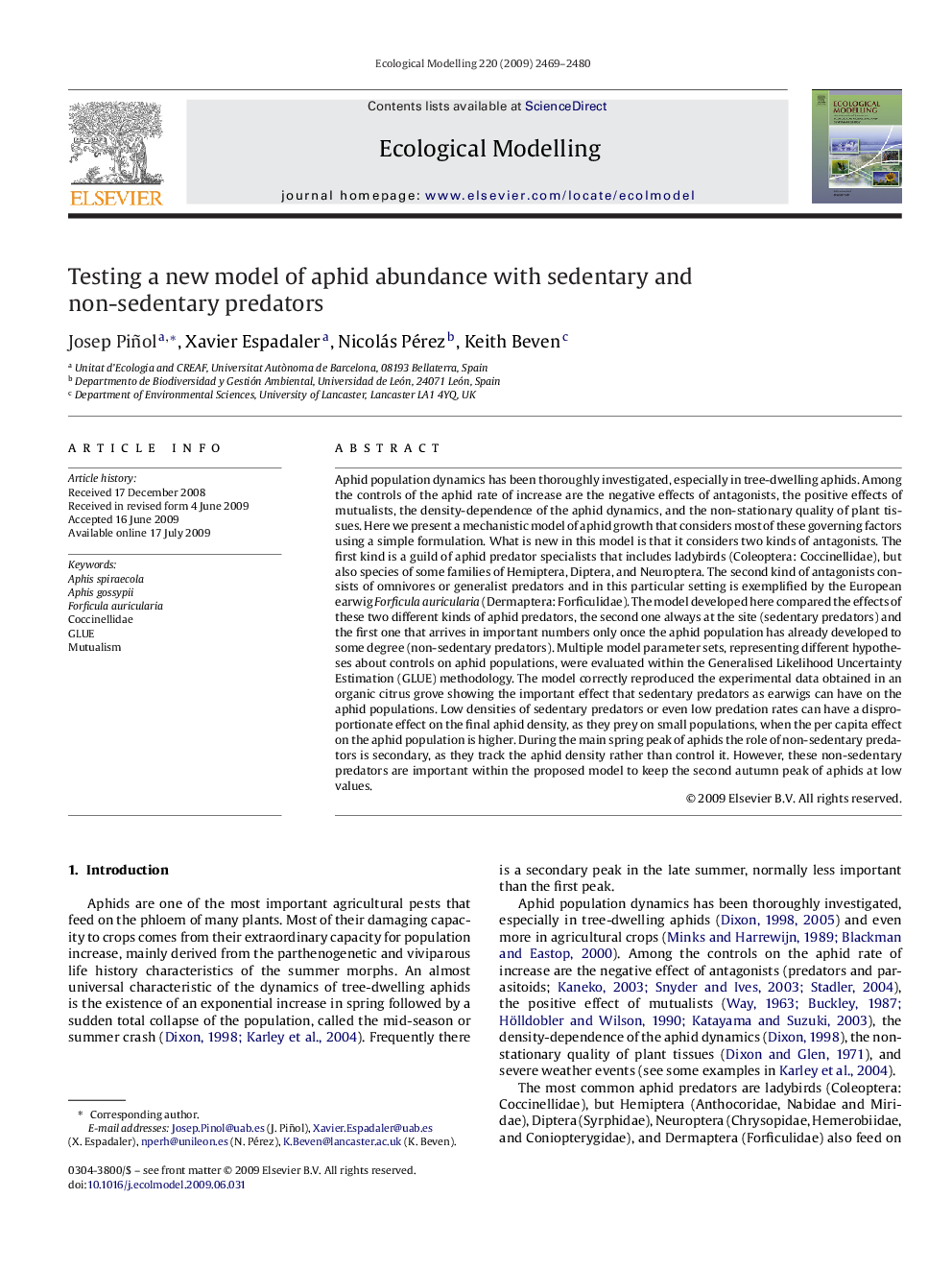| Article ID | Journal | Published Year | Pages | File Type |
|---|---|---|---|---|
| 4377664 | Ecological Modelling | 2009 | 12 Pages |
Aphid population dynamics has been thoroughly investigated, especially in tree-dwelling aphids. Among the controls of the aphid rate of increase are the negative effects of antagonists, the positive effects of mutualists, the density-dependence of the aphid dynamics, and the non-stationary quality of plant tissues. Here we present a mechanistic model of aphid growth that considers most of these governing factors using a simple formulation. What is new in this model is that it considers two kinds of antagonists. The first kind is a guild of aphid predator specialists that includes ladybirds (Coleoptera: Coccinellidae), but also species of some families of Hemiptera, Diptera, and Neuroptera. The second kind of antagonists consists of omnivores or generalist predators and in this particular setting is exemplified by the European earwig Forficula auricularia (Dermaptera: Forficulidae). The model developed here compared the effects of these two different kinds of aphid predators, the second one always at the site (sedentary predators) and the first one that arrives in important numbers only once the aphid population has already developed to some degree (non-sedentary predators). Multiple model parameter sets, representing different hypotheses about controls on aphid populations, were evaluated within the Generalised Likelihood Uncertainty Estimation (GLUE) methodology. The model correctly reproduced the experimental data obtained in an organic citrus grove showing the important effect that sedentary predators as earwigs can have on the aphid populations. Low densities of sedentary predators or even low predation rates can have a disproportionate effect on the final aphid density, as they prey on small populations, when the per capita effect on the aphid population is higher. During the main spring peak of aphids the role of non-sedentary predators is secondary, as they track the aphid density rather than control it. However, these non-sedentary predators are important within the proposed model to keep the second autumn peak of aphids at low values.
